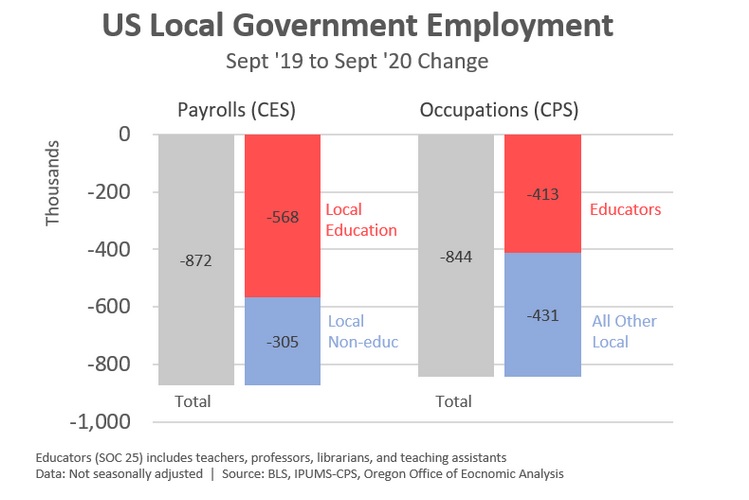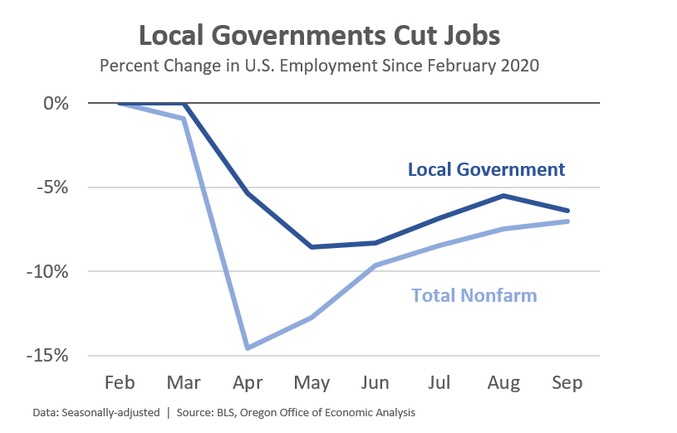By Josh Lehner
Oregon Office of Economic Analysis
This started with a seemingly basic question: “Why is public sector employment down so much this year?” The normal pattern we see is that the public sector is more of a stabilizing force in the economy. Job losses and budget cuts come with a delay as it usually takes time for lower levels of economic activity to translate into fewer tax collections. Those impacts usually hit the budget the fiscal year after the recession starts. However, so far in 2020 local governments have shed nearly as many jobs as the private sector. Both the size of the losses and swiftness with which they came is highly unusual.
After digging into the data it is quite clear that the local government job losses are not a result of your standard budget cuts. That traditional recessionary dynamic is likely to come, but will hit next year, not this. The losses today are directly related to the pandemic and social distancing.
Most surprising are the declines in local education. Yes, bus drivers and lunch workers are impacted by distance learning. However the bulk of the declines appear to be teachers themselves. If all we did was switch from in-person to online schools, why are teaching occupations down double-digits? Some is likely due to lower enrollments — students switching to purely online options, homeschooling, or redshirting potential kindergartners. Some districts may be holding vacancies open in anticipation of future budget cuts.
Even so,the primary reason seems to be the lack of using substitutes. With online school, teachers feeling under the weather can better manage a few live meetings with their classes or send additional work remotely, whereas standing in front of the room all day is more challenging. Nationally, subs account for about 13% of all K-12 teaching jobs. Informal conversations with a few local districts confirms that sub use is down considerably, and really only used for durations lasting more than a day or two.

In terms of higher education, the impacts of the pandemic, social distancing, and online schooling are clear. There’s no sugarcoating it, enrollments across Oregon appear to be down double digits. Official counts will be available later this fall. Informal conversations indicate that full-time employee layoffs are minimal to date. Fewer adjunct instructors and professors are being used. The bulk of the layoffs are tied to student workers, recreational centers, dorms, student unions, and the like.
Besides education, the public sector does a lot of things. Employment here is down largely due to zoos, convention centers, recreation facilities, public pools, libraries and the like being limited during the pandemic. The losses in public administration are relatively small to date.
All of that said, there is still the traditional recessionary dynamic at play. Those impacts will largely come next year, not this. Depending upon a given jurisdiction’s population and economy, it may fare better or worse when it comes to local trends in sales, property and lodging taxes. These differences are already emerging in neighboring jurisdictions, across the state, let alone around the country.
The key question in the outlook is whether these traditional budget issues will be in addition to the pandemic and social distancing ones, or simply replacing them.
Disclaimer: Articles featured on Oregon Report are the creation, responsibility and opinion of the authoring individual or organization which is featured at the top of every article.


